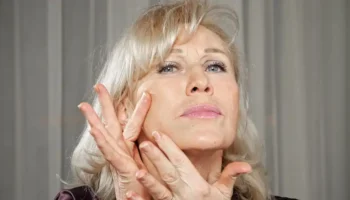If you’re dealing with cellulite, you’re certainly not alone. Whether you’re at the beach or looking at yourself in the mirror, the presence of those dimpled skin areas can sometimes feel frustrating. But what exactly is cellulite, and why does it appear? Is there a connection between cellulite and perimenopause? Let’s explore the science behind it, how it can be treated, and why it might worsen during certain life stages.
What Is Cellulite?
Cellulite refers to the dimpled appearance of the skin, most commonly found on the thighs, hips, and buttocks. It occurs when fat deposits push through the connective tissue beneath the skin, creating a lumpy or uneven texture. This is a completely natural phenomenon, affecting up to 90% of women at some point in their lives. Cellulite isn’t linked to weight or health—rather, it’s influenced by genetics, skin structure, and hormonal factors.

Why Does Cellulite Worsen with Perimenopause?
As women enter perimenopause, the body goes through various hormonal shifts, especially a decrease in estrogen production. This drop in estrogen can affect the skin’s elasticity and the connective tissue, both of which play a role in cellulite formation. During this transitional phase, women may experience an increase in body fat, as well as a redistribution of fat to areas like the abdomen, thighs, and buttocks—exactly where cellulite tends to form.
Research shows that as women age and go through perimenopause, they may notice a worsening of their cellulite due to these hormonal and physical changes. The reduced collagen production and changes in skin texture can make cellulite more prominent and harder to manage.
Available Cellulite Treatments
Thankfully, there are several cellulite treatments available today that can help reduce the appearance of cellulite and restore smoother skin. These treatments come in various forms, ranging from non-invasive procedures to surgical options.

1. Topical Treatments
Creams and lotions designed to reduce the appearance of cellulite work by improving skin texture and circulation. These products often contain caffeine, retinol, or other active ingredients that stimulate fat breakdown and improve skin tone. However, they provide temporary results and are best used alongside other treatments.
2. Massage and Endermologie
One popular cellulite therapy is Endermologie, which involves deep tissue massage and the use of a suction device to help smooth out the skin. It works by boosting circulation, breaking down fat cells, and improving skin elasticity.
3. Laser Therapy
Laser treatments, such as Cellulaze, use targeted energy to break down fat cells and stimulate collagen production beneath the skin. This approach offers more lasting results and addresses the root cause of cellulite—the fatty tissue under the skin.
4. Radiofrequency and Ultrasound
Treatments using radiofrequency or ultrasound waves are designed to heat the skin and underlying tissue, tightening and firming the skin. This therapy targets the fat cells and can reduce the dimpled appearance of cellulite over time.
5. Liposuction
In more severe cases, liposuction or a similar surgical procedure may be used to remove fat cells from beneath the skin. However, this is a more invasive approach and comes with risks, such as swelling, bruising, and a lengthy recovery period.
6. Cryolipolysis (CoolSculpting)
Cryolipolysis, commonly known as CoolSculpting, is a non-invasive procedure that freezes fat cells, causing them to break down over time. This treatment can reduce the appearance of cellulite by targeting and eliminating the fat cells beneath the skin. It’s a relatively painless procedure, with no downtime required, but results can take several weeks to become visible.
7. Carboxytherapy
Carboxytherapy involves injecting carbon dioxide gas into the skin to improve circulation and break down fat cells. This procedure is thought to help with the appearance of cellulite by improving blood flow and oxygenation to the treated areas, promoting smoother skin. It typically requires multiple sessions for optimal results.
8. Mesotherapy
Mesotherapy is a minimally invasive procedure where small amounts of vitamins, enzymes, hormones, and plant extracts are injected into the skin to help break down fat cells and improve skin texture. This treatment can help reduce cellulite by stimulating the body’s natural fat-burning processes. Mesotherapy can be a good option for individuals who are not ready for surgical treatments but want more permanent results than topical creams offer.
9. Acoustic Wave Therapy (AWT)
Acoustic Wave Therapy is a non-invasive treatment that uses sound waves to break up the fibrous tissue causing cellulite. The treatment stimulates collagen production, which can help firm up the skin and reduce the appearance of dimples. Multiple sessions are usually recommended for noticeable improvement.
10. Subcision (Cellfina)
Subcision, often referred to as Cellfina, is a minimally invasive procedure where a needle is used to break up the connective tissue that causes the dimpling of the skin. This treatment has gained popularity due to its long-lasting effects and minimal recovery time. It’s effective for moderate to severe cellulite and usually requires only one treatment session.

Cost of Cellulite Treatments in the UK and USA
When it comes to cellulite treatments, the costs can vary significantly depending on the type of therapy, the clinic, and the country.
In the UK:
- Topical treatments: Prices for creams can range from £15 to £50, depending on the brand.
- Endermologie or massage therapy: Sessions typically cost between £50 and £100 per treatment.
- Laser treatments: A session can cost between £200 and £500, depending on the area being treated.
- Surgical procedures (like liposuction) can run into the thousands, starting at around £2,000 and going up from there.
- Cryolipolysis (CoolSculpting): Costs between £700 and £2,000 per session, depending on the size of the area treated.
- Mesotherapy: Typically costs between £150 and £400 per session.
- Acoustic Wave Therapy: Prices range from £100 to £300 per session.
- Subcision (Cellfina): Can cost between £3,000 and £5,000 for a single treatment.
In the USA:
- Topical treatments: These typically cost between $20 and $100.
- Endermologie: Sessions typically cost between $100 and $200 each.
- Laser treatments: These range from $300 to $600 per session.
- Liposuction: Surgical treatments can cost anywhere from $2,000 to $5,000 or more.
- Cryolipolysis (CoolSculpting): Prices range from $1,500 to $4,000 per session.
- Mesotherapy: Typically costs between $250 and $500 per session.
- Acoustic Wave Therapy: Costs between $150 and $400 per session.
- Subcision (Cellfina): Can cost between $4,000 and $6,000 for one treatment.
It’s essential to consult with a professional to determine the best course of action for your needs and budget.
Is There Research on Cellulite and Perimenopause?
Yes! Several studies have looked into the link between cellulite and hormonal changes during perimenopause. Research suggests that as estrogen levels drop, the collagen structure of the skin weakens, leading to an increase in cellulite visibility. A study published in the Journal of Cosmetic Dermatology found that women undergoing hormonal changes showed a marked increase in cellulite, suggesting that perimenopausal changes significantly contribute to its formation and severity.
Final Thoughts: Managing Cellulite Through Perimenopause
While dealing with cellulite can feel like an uphill battle, especially during the hormonal changes of perimenopause, understanding its causes and treatments can help you make informed decisions. There are various cellulite therapies available that can improve the appearance of your skin, and consulting with a dermatologist can help you find the right treatment for your needs.
Remember, cellulite is a natural part of life for many, and while treatments can help, embracing your body and its changes is key to feeling confident at every stage of life.







